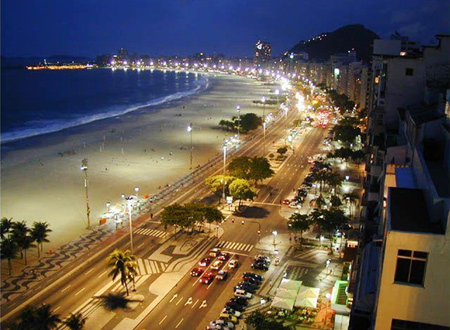About Wenzhou
Wenzhou is located at the middle section of the circum-Pacific 18,000-kilometer-long west coast of China, intersecting the two economic zones of the Yangtze River and the Pearl River Deltas. It is the economic, cultural and transport center of south Zhejiang Province.

- Wenzhou's history.
-
Wenzhou was once a famous town of the Eastern Ou(the eastern part of the Oujiang River valley) with a brilliant cultural history. In 192 BC it was the capital of the Kingdom of the Eastern Ou and in AD 323 it became Yongjia Prefecture. It was also called the City of White Deer, for, as legend has it, when the city was being built a white deer passed by it holding a flower in its mouth. In AD 675 it began to be called Wenzhou, its name to this day. Historically, Wenzhou has been a city renowned for its handicrafts and also as one of the birthplaces of celadon. Wenzhou's papermaking, shipbuilding, silk, embroidery, lacquer work, as well as its shoes and leather products, achieved a fairly eminent position in the history of China. During the period of the Southern Song Dynasty, it was opened up as a foreign trade port, enjoying a reputation as a prosperous coastal city comparable to Hangzhou. Wenzhou is the hometown of Nanxi Opera or the Southern Opera. The Tale of the Pipa, written by the famous Wenzhou playwright Gao Ming in the mid-fourteenth century, has been translated into a number of foreign languages and achieved worldwide renown. Wenzhou has given birth to many outstanding people and great scholars. Among the most famous were the philosophers of the Yongjia School as represented by Ye Shi, and the poets of the River and Lake School as represented by Yongjia's four distinguished poets during the Southern Song Dynasty, as well as Sun Yirang, Xia Nai, Xia Chengtao, Su Buqing and others of the modern era, all of whom have exerted significant influence in the history of Chinese thought, literature and science.
- The Development of Wenzhou
-
Wenzhou was called Ou in history and belonged to a County of Min (another name of Fukien Province) after Qing Dynasty having unified the whole country. It was the Capital of Donghai King (also called Dong'ou King Zouyao) in 192 B.C. In 134, Yongning County grew out of Dong'ou Town of Xizhang'an County, the county jurisdiction was set up at the north shore of the lower reaches of Oujiang River, which was within today's Oubei Town of Yongjia County, that was the beginning of establishing county in Wenzhou area. In 323, Yongjia Prefecture grew out of four counties of Yongning, Angu, Hengyang, Songyang in the south of Xilinhai Prefecture, the prefecture jurisdiction was set up at the south shore of the lower reaches of Oujiang River (today's Lucheng District), that is the beginning of Wenzhou establishing Prefecture. In 662, Dongjia State was established and Wenzhou was established in 675, since then, over more 3000 years, the name of Wenzhou has not been changed and the border has also not been changed by a big margin. After the Revolution of 1911, on Nev.8, 1911, Wenzhou established Branch of Military Government, which was subordinate to Jiang Military Government.
In June 1914, Ouhai Dao (bigger than Prefecture) was established and governed two prefectures of Wenzhou and Chuzhou, the government office of Dao was located in Yongjia County, which belonged to Zhejiang Province. In 1932, the administrative supervision district was established. Wenzhou District was originally called No.10 County Administrative Supervision District and the office of commissioner was located in Yongjia County, which name was been changed for several times later, and was called No.4 Special District, No.3 Special District, Yongjia Administrative Supervision District and No.8 Administrative Supervision District, in April 1948, which was called No.5 Administrative Supervision District.
On May 7, 1949, Wenzhou was liberated peacefully and Wenzhou City Military Control Commission was established; on August 26 of the same year, the No.5 special administrative division and Wenzhu City were established. After the establishment of the People's Republic of China, it was called Wenzhou District Commissioner Government Office. After that, its name and the counties governed by it have been changed for several times. In September 1981, Wenzhou Prefecture and Wenzhou City were merged into Wenzhou City, and carried out the system of City governing County. Now it governs three districts of Lucheng, Longwan and two cities of Ouhai, Rui'an and Yueqing, and six counties of Yonyjia, Dongtou, Pingyang, Cangnan, Wencheng and Taishun.
- Future Development
-
Marching into the 21st century, Wenzhou will firmly uphold Deng Xiaoping's theory and General Secretary Jiang Zeming's important thinking of "Three representatives" as the guidance to fully implement the orientation strategy of modernization set by he Municipal Eighth Party Congress, vigorously promote the construction of modernized new Wenzhou and strive for the main realization of socialist modernization ahead of schedule. The major target of Wenzhou's "Tenth Five-Year" development plan is working hard to continue keeping the economic growth speed above the national and Zhejiang provincial average level, with the annual average increase rate reaching about 11 percent, the per capita average GDP getting close to 20 thousand yuan by the year 2005 and the people's livelihood being better-off, to build the regional central city radiating to south Zhejiang and north Fujian and the extra big city, to construct the state-level city of traffic hub, the production base of light and processing industries and the secondary centre of education in Zhejiang province and to found the national civilized city before the opening of the 15th National Congress of the Party.

 Inquiry Basket (
Inquiry Basket (

